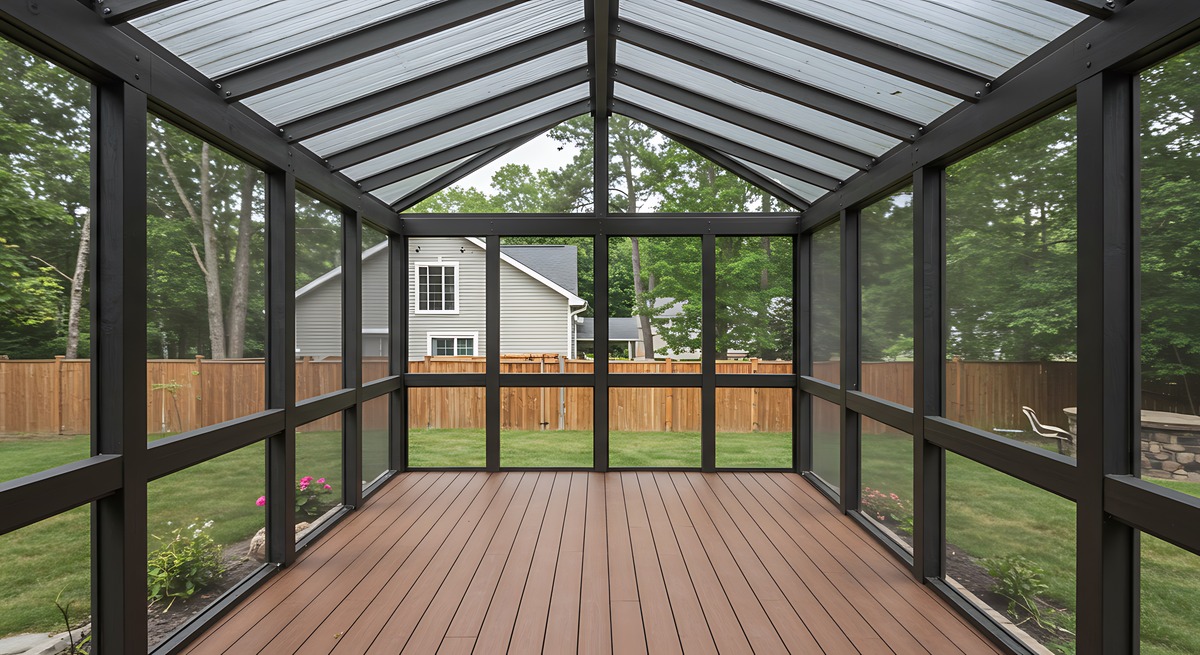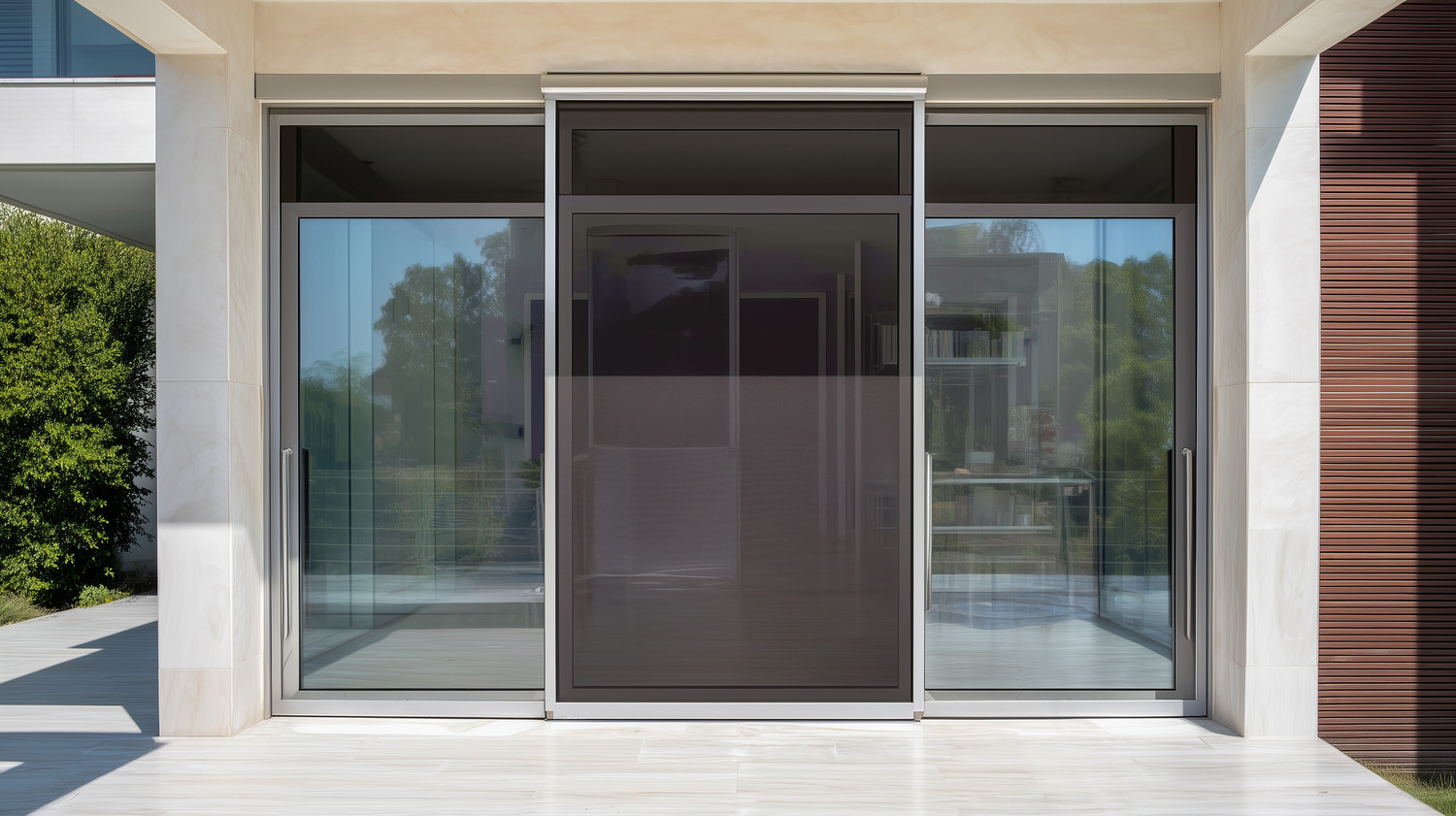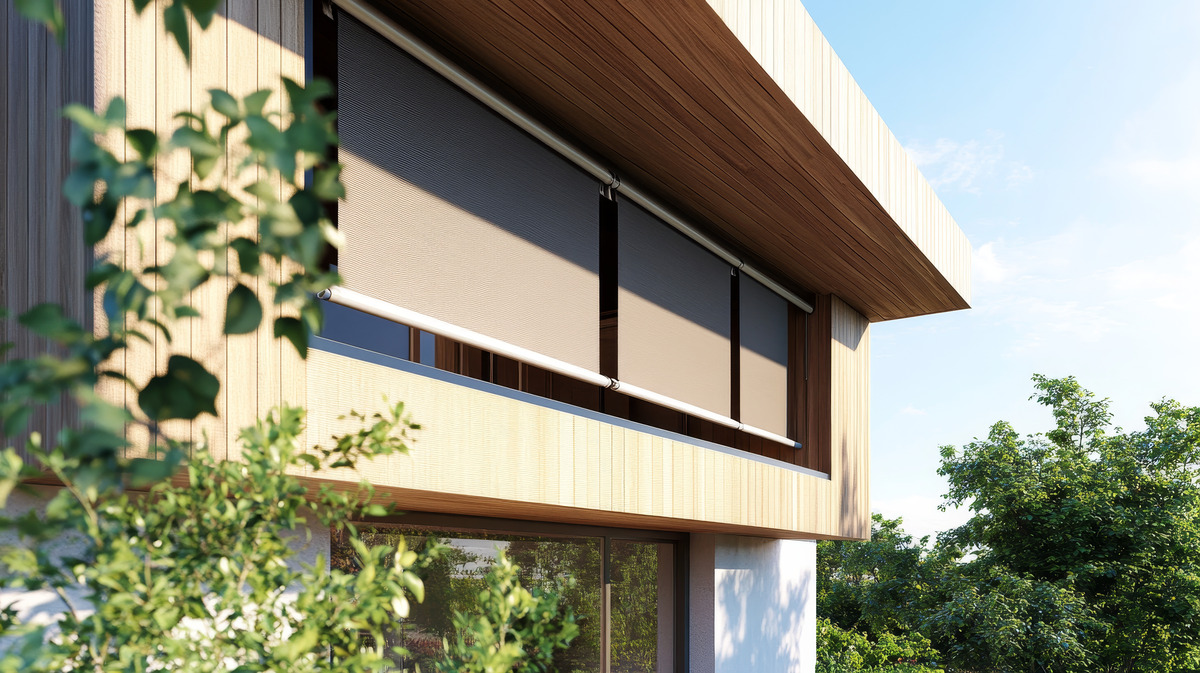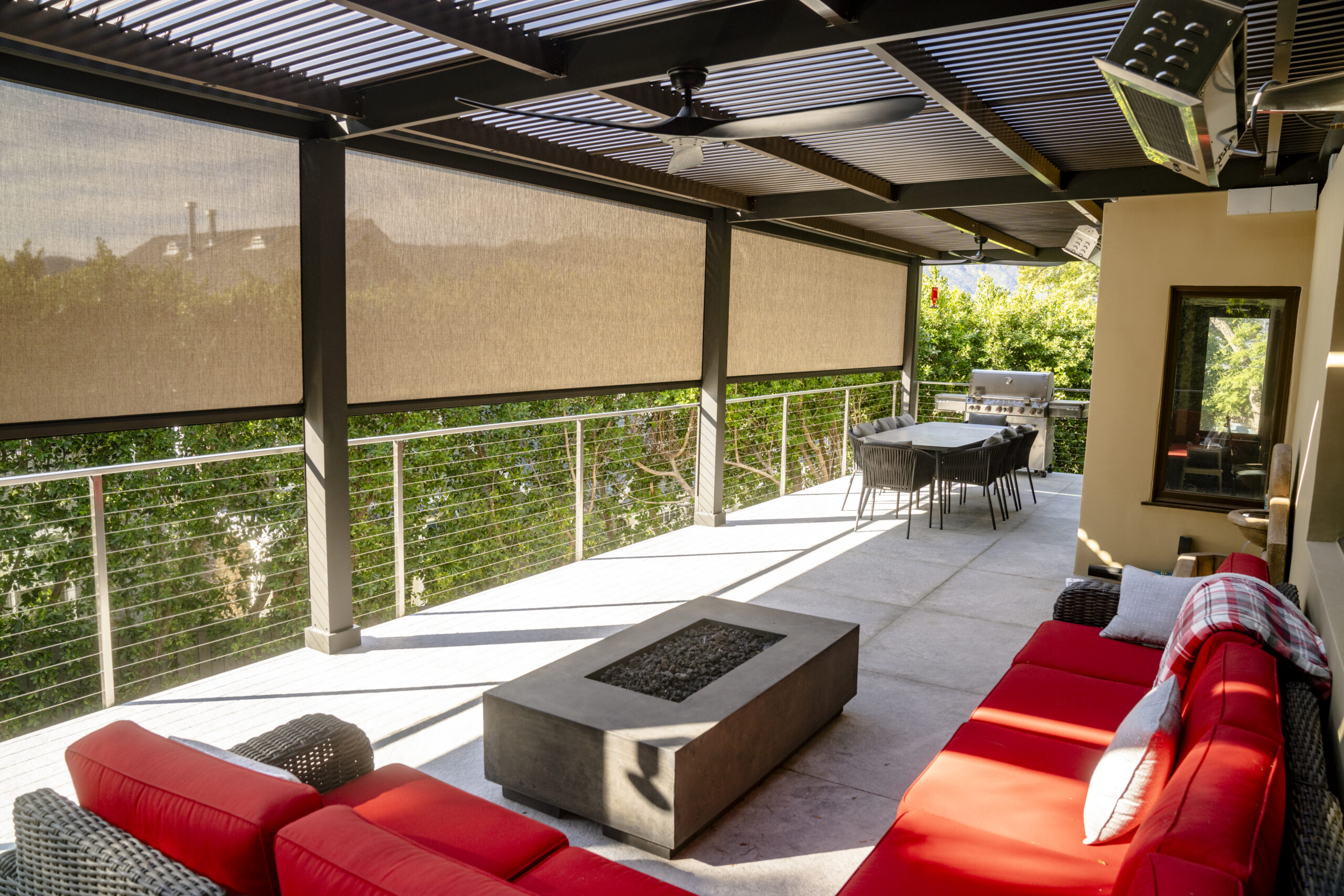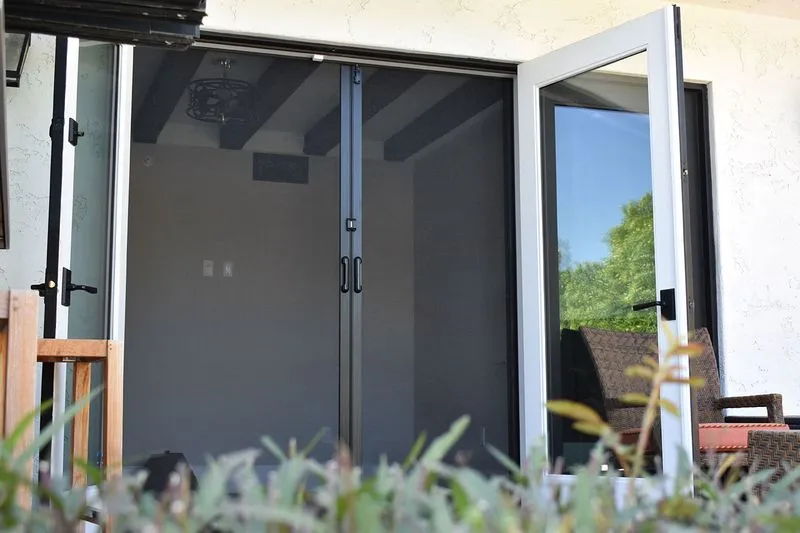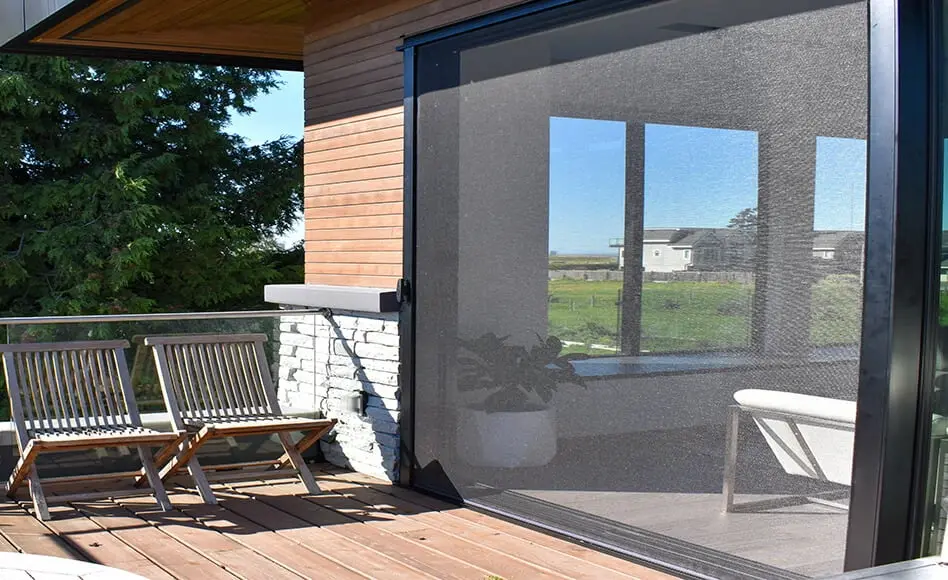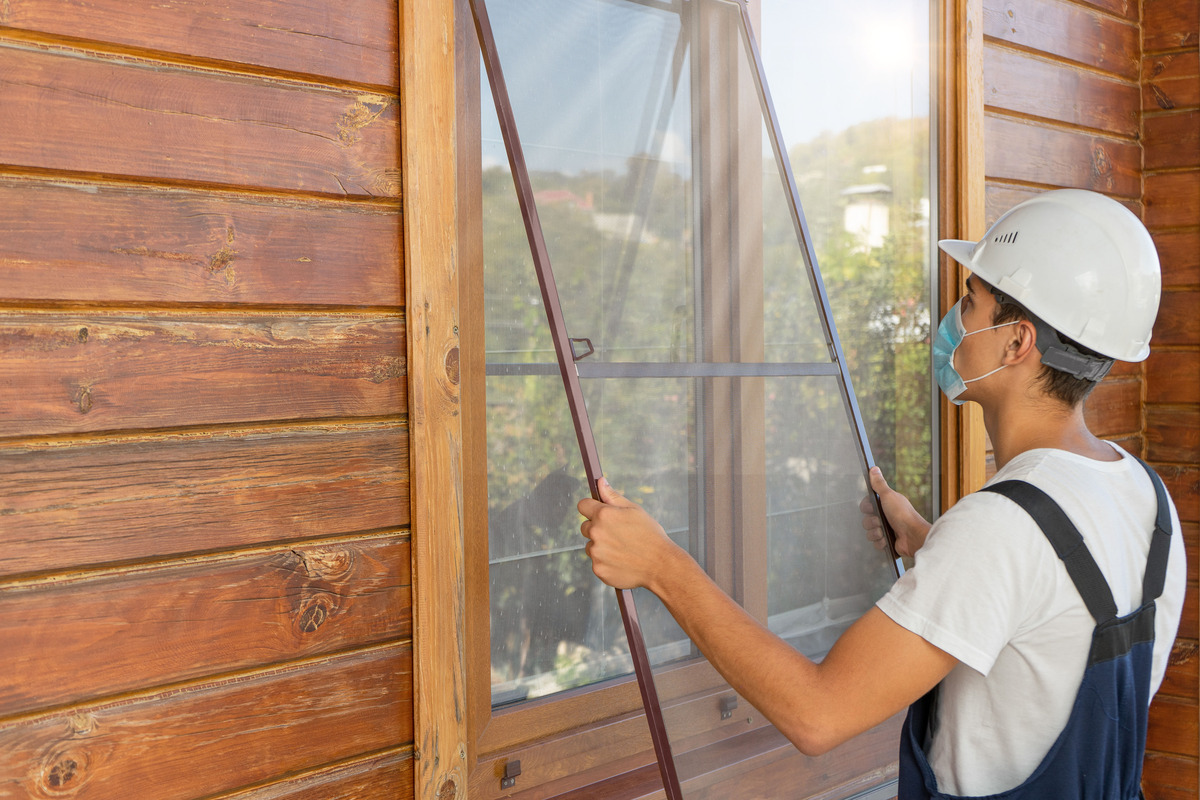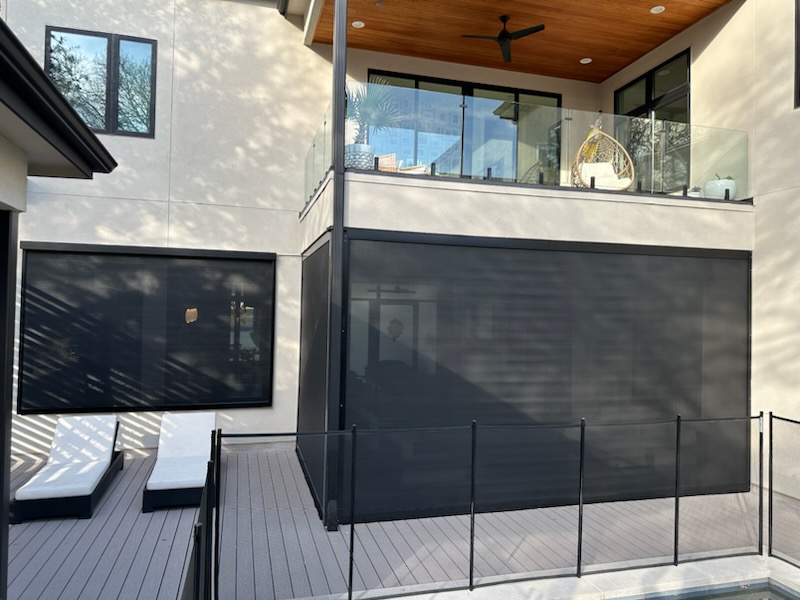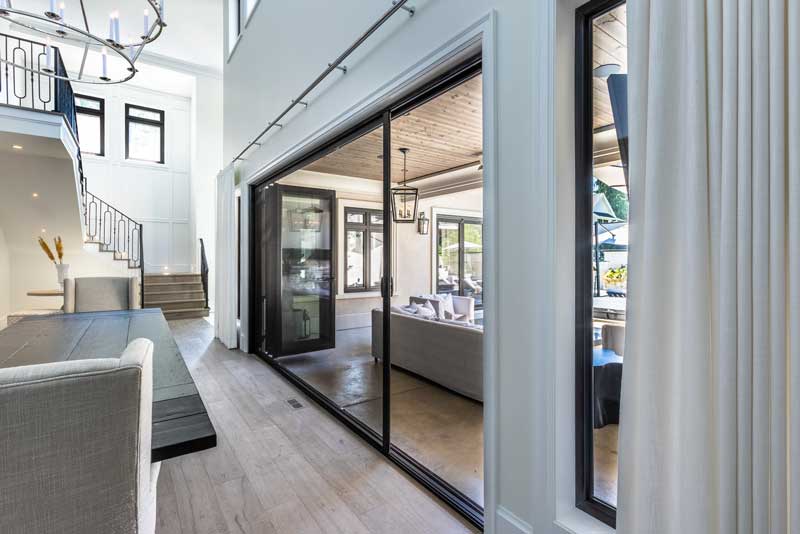Building a 3 to 4-season sunroom with retractable screens can be a great addition to your home that will expand the livable space so you can enjoy the benefits of the outdoors while being in the comfort of your home. When designing a sunroom with retractable screens, you need to plan accordingly to make sure it will be the perfect fit for you and your home. This article will break down what you need to consider for your sunroom in terms of planning the project, design, materials, functionality, and more.
What is a Sunroom?
A sunroom is a multi-purpose room that is typically built as an extension of your home that allows you to enjoy the benefits of the outdoors while still being in the comfort of your own home. Sunrooms are a hybrid room that can be used during all seasons depending on how it’s configured. Sunrooms can be made to be closed off during the cold winter months, and then opened in the warm summer months. Sunrooms are a highly customizable room in your home that you can tailor to your exact needs. Installing retractable screens on sunrooms will add another level of depth that allows you to let fresh air inside the room, while still being protected by bugs and other outside elements.
Three Season Sunroom
A three season sunroom is a type of enclosed room that is intended to be used during the spring, summer and fall but is not typically insulated for use during the winter. A three season sunroom offers a versatile and comfortable extension of your home that can protect you from bugs, UV rays, and other elements so you can enjoy the positives of the outdoors while keeping the negatives outside. Three season sunrooms can be built with retractable screens to add a modern solution for UV and pest control as the screens retract back into their housing when not in use, so they don’t take away from the view or aesthetic of your sunroom.
Four Season Sunroom
A four season sunroom is a fully enclosed room that is an extension of your home and can be used throughout the entire year, regardless of the season. Four season sunrooms are built to be insulated and keep the space warm during the cold winter months, but also being able to open the space in the warm summer months to allow fresh air to circulate through. Retractable screens installed on a four season sunroom can be enjoyed during the spring, summer and fall, as you can open the screens to allow fresh to come in, and keep bugs out. You can use your four season sunroom space for a long list of activities including hosting dinners, yoga, enjoying your morning coffee, a reading room, and much more.
Benefits of Building A 4-Season Sunroom With Retractable Screens
Building a 4-season sunroom with retractable screens will bring many benefits to your home. The 4-season sunroom will create more livable space in your home that you and your house guests can enjoy for years. Whether you want to host dinner guests on a cold winter night or you want to relax and read your book on a warm summer evening, a 4-season sunroom will allow you to do this, and so much more. Retractable screens installed on your 4-season sunroom will add a modern twist to a traditional sunroom with fixed screens.
The added benefit of retractable screens on your sunroom is that they are across the opening when you want them to be, and then can easily retract back into their housing when you’re done using them. Retractable screens for your sunrooms are highly customizable and can be made with different colors, mesh types, control options, and mounting types. If you have high sun exposure in your sunroom, you can opt for a solar mesh that will block the harmful UV rays of the sun. If you have pesky insects in your area and want to enjoy your sunroom space without bugs, an insect mesh would be your best option. Your local Mirage retractable screens dealer will be able to offer you the best retractable screen solution for your 4-season sunroom.
How to Make a Sunroom For 3 to 4 Seasons With Retractable Screens
Integrating retractable screens into your 3 or 4 season sunroom will give you the best of both worlds: an open-air, bug free space during the warm months, and a weather protected room in the colder months. Before you get to the stage of installing retractable screens on your sunroom, you will need to have the sunroom built and designed in a way that seamlessly integrates the screens. Keep reading below to learn about the stages of building a sunroom:
Permits, Layouts, Foundation, & Planning
So you’re finally ready to pull the trigger on building that new sunroom in your home. In order to move things forward in an efficient manner, you need to plan for permits, layouts, and foundation. In most municipalities, you will need to submit a plan and get approval for the project before you can start construction. For the sunroom layout and design planning, you will need to work closely with the contractor you’ve selected for the job to make sure the design works best for your needs and will integrate easily with your home.
Things to consider are aligning the sunroom with the living room, kitchen, or dining room, including large openings in the sunroom, planning for future HVAC, power, or lighting, and designing for modularity. You will also need to determine the overall size of the sunroom you want to build, and part of what will determine that is the space in your room where you will build it. For the foundation, if you have decided to build a 4-season sunroom, it will be crucial for insulation and keeping the space warm during the cold months.
Roofing, Framing & Walls
When building a 3 or 4-season sunroom, the roofing, framing, and wall systems are critical in ensuring comfort, structural integrity, and resale value. These elements of your sunroom are even more critical when you’re planning to use the space year-round. For roofing, framing, and walls, you have many options, but we recommend that you consult with the contractor you’ve hired for the job to discover what the best option is for your design and needs.
Choosing Materials & Retractable Screens
Integrating retractable screens into your sunroom is a great option that will solve a range of problems, such as insect control, UV protection, fresh air flow, and more. Depending on how your sunroom is configured, you can choose between a traditional retractable screen door, a large opening retractable screen door, and motorized or roll-down screens.
Each product has its own benefits and will add more function to your sunroom space. Retractable screens can be made with various mesh and material options to make sure the problem you’re trying to resolve by adding them works as intended. Your local retractable screen specialist will be able to guide you through the process of adding retractable screens to your sunroom, and what the best option would be for your needs.
Furnishing & Finishing
Furnishing and finishing your sunroom is where function meets comfort. The finishing stage is where you add character to your new living space and turn it into a beautiful extension of your home that will be enjoyed for years to come. When finishing a sunroom, you will need to add proper furniture, flooring options, walls, ceilings, and trim finishes, window treatments and light control, and lastly decor and ambiance. How you put the sunroom together is all up to you. You can decide to follow a color scheme or even change the style up depending on the season, having certain furniture and finishings during the summer and then swapping them out for warmer options during the winter.
Heating, Cooling, & Insulation
Heating, cooling, and insulation are key components that can turn your basic sunroom into a 3 or 4-season extension of your home. Choosing the right systems for your existing sunroom, or integrating it with a new addition to your home, will save energy, increase usability, and improve resale value. For heating systems, you can choose between installing a heat pump, electric baseboard heaters, radiant floor heating, electric fireplace/heater, and extending your existing HVAC system.
For cooling systems, you can add a mini-split system, ceiling fans, a portable AC unit, extend HVAC ducts, and add solar control screens or shades to reduce heat inside the sunroom. For insulating your sunroom, you can add a combination of roof insulation, wall insulation, floor insulation, and window and door insulation to keep the space more insulated for the cold months.
Choosing The Right Retractable Screen For Your Sunroom
Choosing the right retractable screen for your sunroom is a crucial step, and one that will be determined by your needs and the configuration of your sunroom. The Mirage retractable screen has three retractable screen products that can be integrated into your sunroom space. Our flagship product, the Mirage 750 retractable screen, is intended to be installed on doors and windows.
Our 3500 large opening retractable screen can be installed both horizontally and vertically and is typically installed on bi-folding doors, large French doors, outdoor patios, and other applications. The final retractable screen product that you can install in your sunroom is our H4500 motorized screen. The H4500 motorized screen is an electric motor-powered screen that can be installed on a wide range of applications, including garage doors, outdoor patios, gazebos, and other large openings.
Motorized Screens
Installing motorized screens in your 3 or 4-season sunroom would be a great addition that offers comfort, flexibility, and protection year round. Motorized screens are a modern screening solution that will offer bug protection, UV protection, privacy control, climate control, and versatile use options, as the screens will retract back into their housing when not in use. For a 3-season sunroom setup, you may want to opt for solar or vinyl mesh. For a 4 season sunroom setup, combine insulated windows with motorized solar or privacy screens. Motorized screens can be controlled using a handheld remote, a wall-switch system, or integrated with your existing smart home system.
Privacy Screens
Privacy screens for your 3 or 4 season sunroom will offer added privacy year-round while still allowing adequate airflow and bug protection for your sunroom space. Motorized privacy screens can block up to 97% of sunlight from entering the space, and will retract up and down at the push of a button. Privacy screens for sunrooms will ensure that your neighbours or onlookers can’t see into your sunroom space. We recommend that you consult with your local Mirage retractable screens dealer to determine what the best privacy screen setup is for your sunroom.
Large Opening Screens
Large opening screens are a great solution for sunrooms with wide sliding doors, folding glass walls, or open-air transitions to your deck or patio space. Large opening screens keep insects outside, let fresh air flow into your sunroom, and maintain the view. You have the option of having a large opening screen operate horizontally or vertically. Typically, horizontal large opening screens are motorized or roll-down screens, while vertical large opening screens are retractable screens on a larger scale that operate with a handle.
Vinyl Screens
Vinyl screens for your 3 or 4 season sunroom is a perfect solution for enclosing the space. Vinyl screens offer versatile protection from bugs, UV rays, wind, rain and other weather elements, while also blocking the view of people looking into your sunroom space. You have the option to install a mesh unit and a vinyl unit in your sunroom so you can drop the mesh screens when necessary, and also drop the vinyl screens if you want more privacy and to completely block air and weather elements from entering the space. Vinyl screens in your sunroom will also help insulate the space as it will trap cold or warm air inside, so it’s great for year-round use regardless of the weather or temperature outside.
Roll Down Shades
Roll down shades are one of the most versatile upgrades for your 3 or 4 season sunroom that will offer functionality, comfort, energy savings and style to your space. Roll down shades are typically powered by electric motors that will retract the screen up and down depending on when you want to use them. You can install a wide range of different mesh and other material in roll down shades to make sure they’re a good fit for you. Some examples of material you could choose to have installed in your roll down shades are insect mesh, solar mesh, privacy mesh, or vinyl material.
Pet Screens
Pet screens can be a great option to add to your sunroom, especially if you have cats or dogs in your household. Standard mesh material can easily fray or be scratched by your furry friends, which is where pet screens come in. Pet screens are a polyester coated mesh that will be scratch and tear resistant. If you have animals in your home we highly recommend that you consider using pet screens for your screening solutions in your sunroom.
Solar Screens
Integrating solar screens into your 3 or 4 season sunroom will block the harmful UV rays of the sun, protecting you and your house guests when you use the space. Installing solar screens on your sunroom will reduce glare, heat, and UV damage as they’re made of special solar resistant fabrics, and are made in a tight weave to block most of the sun’s rays. Solar screens come in different grades, from blocking 90% of the sun to up to 97% while still maintaining the view looking out of your sunroom.
Maintaining Your Four-Season Sunroom
Maintaining your 3 or 4-season sunroom is key in preserving the comfort, aesthetic, and value. Your sunroom will be used regularly year round and be exposed to outside weather elements which makes it important to prioritize maintaining it. Here are a few things to maintain on a regular basis:
- Clean windows and frames regularly
- Inspect and clean HVAC
- Check for water & air leaks
- Maintain, shades, screens & vinyl panels
- Protect furniture and surfaces
- Safety & electrical checks
- Cleaning exterior roof, gutters & skylights
Frequently Asked Questions (FAQs)
The value that a 4-season sunroom adds to your home depends on multiple factors. The benchmark for how much value a sunroom will add to your home is typically 50-80% of the construction cost, but this rate can be larger or smaller. The main factors that will determine the value are size, quality, and how it integrates with your home functionality.
The cost of a permit for building a sunroom depends on your area and local regulations. Typically, the cost of the permit depends on the total cost of the construction project. We recommend that you check with your local municipalities to understand the cost of getting a permit for building a sunroom.
Yes, you can use a 4-season sunroom during the winter as it will be insulated and is designed to keep the space warm during the cooler months. You can also add space heaters to your sunroom to warm the room up to your desired temperature.
To heat your 4-season sunroom you have a few options, and will ultimately depend on the climate, insulation quality and how often you use the space. You can extend your home’s HVAC system for a seamless temperature control option. You can install electric baseboards or wall heaters to heat the room when in use. You can also install portable space heaters to warm the space during the cold months, and then put them away during the warm months.
The cost to build a 4-season sunroom can vary based on location, size, materials used, and features. The average cost per square foot ranges from $250-$400, with the total cost ranging from $20,000-$100,000+. To get an accurate cost figure for building a 4-season sunroom, we recommend that you contact a contractor in your area who specializes in sunrooms.
Yes, a 4-season sunroom will require a foundation as it’s designed to be fully insulated and can be enjoyed year round.
A 4-season sunroom doesn’t require air conditioning, but it’s a great feature to have as it will keep the area temperature controlled, and you can enjoy your sunroom space even on the hottest of days.
Building a 3 to 4-season sunroom can typically take 3 to 10 weeks depending on multiple factors. For example, a basic 3 season sunroom built on a patio slab should only take 3 weeks to build from scratch. While a custom 4-season custom sunroom built on a new foundation with HVAC can take up to 10 weeks or more to complete.
.png)
